|
Organ of the Cathedral of La Serena church
Louis Debierre organ (1842-1920), Nantes (ca. 1908). Two keyboards. Mechanical action. (Note from the author of this article: Mr. Luis Glonzález Catalán) "Unfortunately I don't remember when we made the recovery work on that organ, which had place before Mgr. Piñera handed over the diocese to his successor Francis Joseph Cox Hunneus, who unfortunately rejected the repair project of the Carlini organ of the sanctuary of Our Lady of the Rosario of Andacollo. Some history. In relation to the organ of the Cathedral Church of La Serena, Don Miguel Castillo Didier affirms the following: "Before referring to the (organs of Aristíde) Cavaillé-Coll, we will remember the largest organ in the northern Chile and one of the most beautiful, built at beginning of the (20th) century by the organ builder Debierre, Nantes. In 1928 Oreste Carlini placed a electric fan. In the Guide to the Church in Chile 2006-2007, find this interesting quote: "The archdiocese of Our Lady of the Rosary of Andacollo de La Serena was erected as a bishopric by the bull 'Ad Apostolicae fastigium', by Pope Gregory XVI. *Don Ramón Ángel Jara was bishop of Ancud since 1898 until 1909 (Guide cited, page 304). A chronicle confirmed indicates that originally the organ Dèbierre was commissioned for the cathedral of Ancud, but upon being notified of his appointment as bishop of La Serena, Don Ramón Ángel Jara would have taken the instrument with him. Another scope that needs to be done: The instrument has 16 true pipe rows, and not 21, as my Dear friend and colleague Miguel Castillo Didier. To the write his article Don Miguel, he only had his reach the information that appeared on the console, and could not verify that in fact the registers that listed as belonging to the pedal keyboard were actually transmission of registers corresponding to the first keyboard. The Dèbierre organ has 6 real registers and 392 pipes on the first keyboard called the Great Organ. He second keyboard, called expressive because its pipes enclosed in a box with blinds that the organist manipulates at will by means of a lever on the console, it has 9 registers, which account for a total of 14 rows of pipes, and a theoretical total of 736 pipes. The calculation of the pipes is done by multiplying the number of rows of pipes times the number of notes in keyboard. The result of this operation gives 392 pipes for the first keyboard (seven rows of pipes for 56 notes). In the case of the second keyboard you must deduce an octave (12 pipes) in the register called Voix Céleste, and we must deduce from the mixture the pipes that do not exist, from the factory, in the first two octaves. According to my red notebook, the mixture is progressive, from 3 to 5 rows. If so, the mixture It does not have 56 x 5 pipes (280 pipes) but only 244 pipes since in the first octave 24 pipes are deduced of the five rows, and in the second octave they deduce only 12 pipes (560 minus 36 equals 244). In Consequently, the total number of pipes in that organ is 392+736= 1,128 pipes. The pedalboard has no registers own. From now on I tell you that I have made these calculations based on the notes in my red notebook, which was revised by John Moir, organ builder American who lived in Chile between 1971 and 1978. An effective count would allow us to verify what following:
I hope that these data, which are part of my doctoral dissertation called "Pipe Organs in Chile: An Historical Overview and a Catalog", which I hope finishing soon at Texas Tech University, Lubbock, Texas, are useful for your work. |
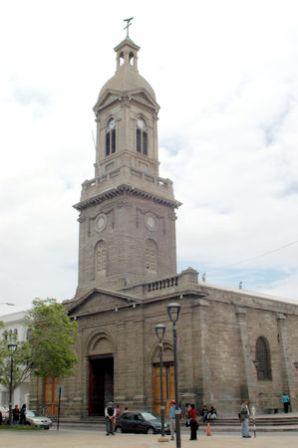
|
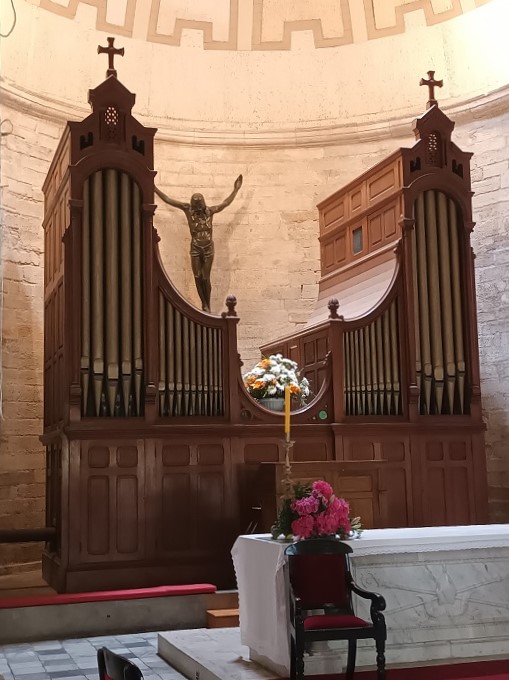
|
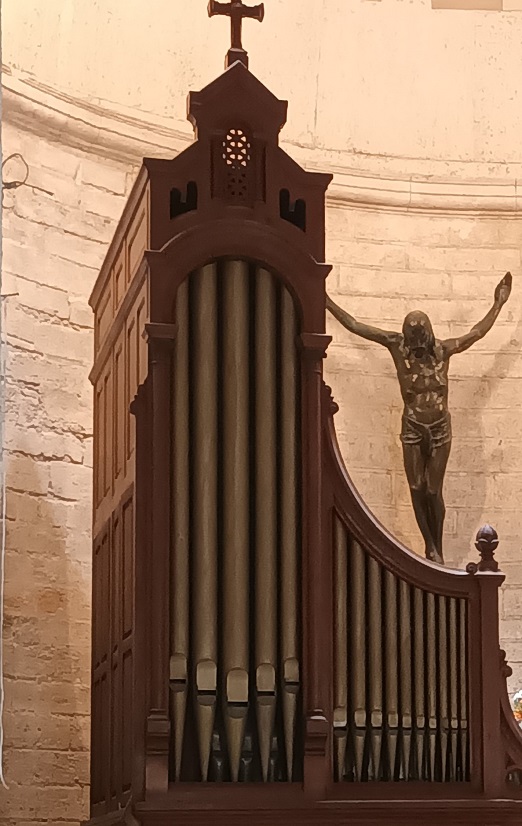
|
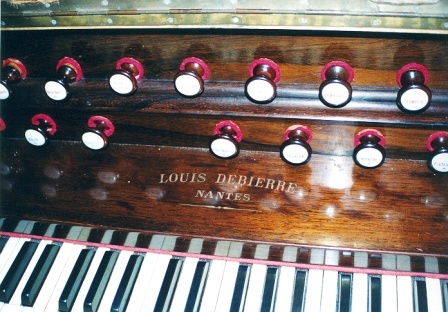
|
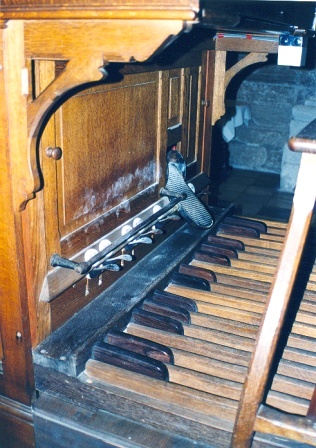
|
|
|
Site Map
Back
Builder ....
Louis Debierre, Francia
Built ....
1908?
City ....
La Serena
Class ....
Cathedral Organs
Location ....
Catedral de La Serena
Photograph ....
Eduardo P. Pérez E., Hinrich Huber (2003)
Restauration ....
Dr Luis González y sus hermanos, 1985-1986
Information ....
Miguel Castillo Didier -- Dr Luis Gonzalez Catalán
(I) Grand Orgue (56 Keys)
1 -
Violone
16'
2 -
Bourdon
16'
3 -
Montre
8'
4 -
Flûte Harmonique
8'
5 -
Flûte Harmonique
8'
6 -
Prestant
4'
7 -
Doublette
2'
(II) Recit Expressif (56 Keys)
1 -
Violoncelle
8'
2 -
Voix Celeste II
8'
3 -
Flûte Traversiére
8'
4 -
Cor de Nuit
8'
5 -
Octavin (segun M.Castillo
2'
6 -
Cor de Nuit
8'
7 -
Plein Jeu
III-V
8 -
Bombarde
16'
9 -
Trompette
8'
10 -
Clairon
4'
(P) Pedalale (27 Keys)
1 -
Violone
16' (del G.O.)
2 -
Bourdon
16' (del G.O.)
3 -
Basse
8' (Montre G.O.)
4 -
Dolce
8' (Bourdon G.O.)
5 -
Flûte
4' (Prestant 4┤ G.O.)
Couplers:
I Super - I
I - II
I - P
II - P